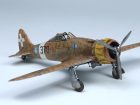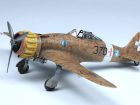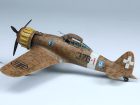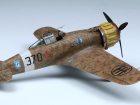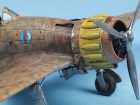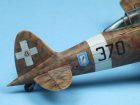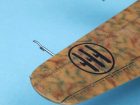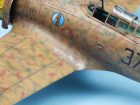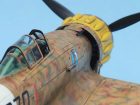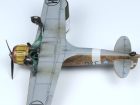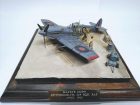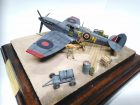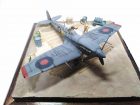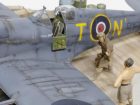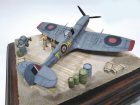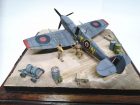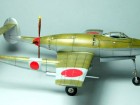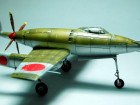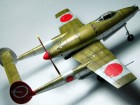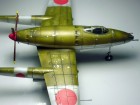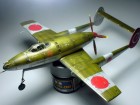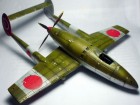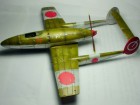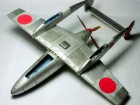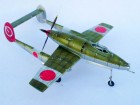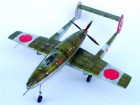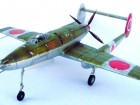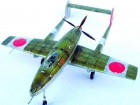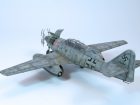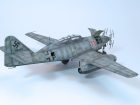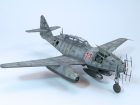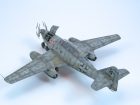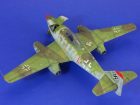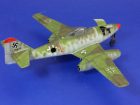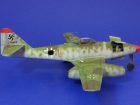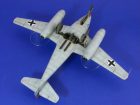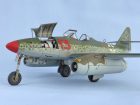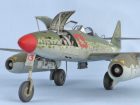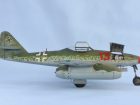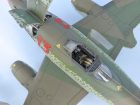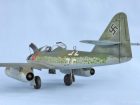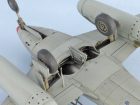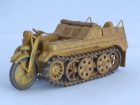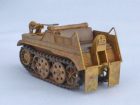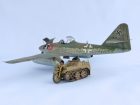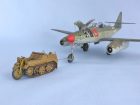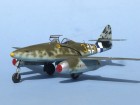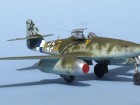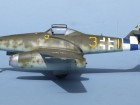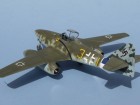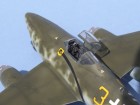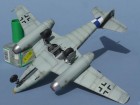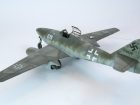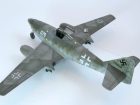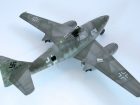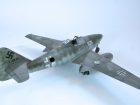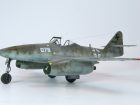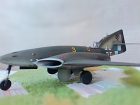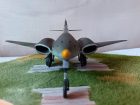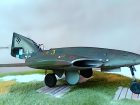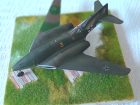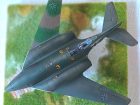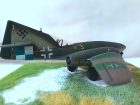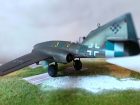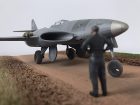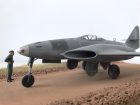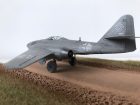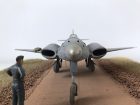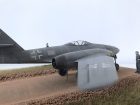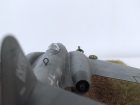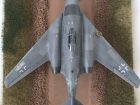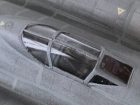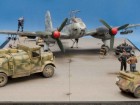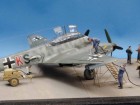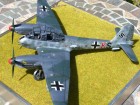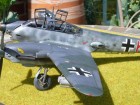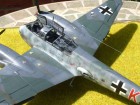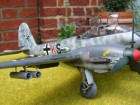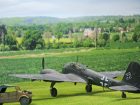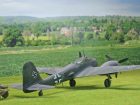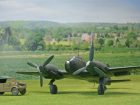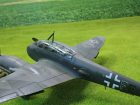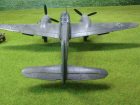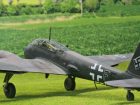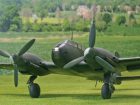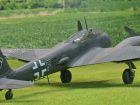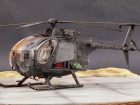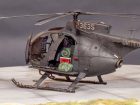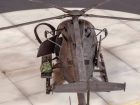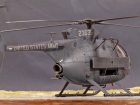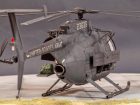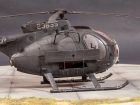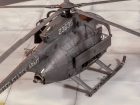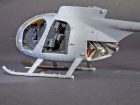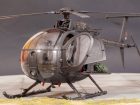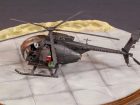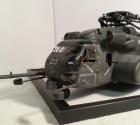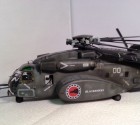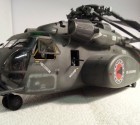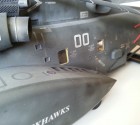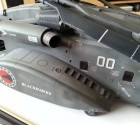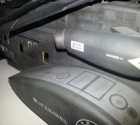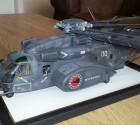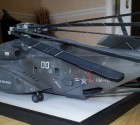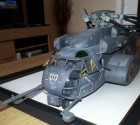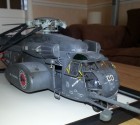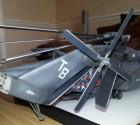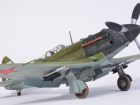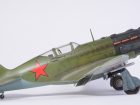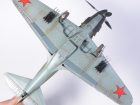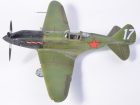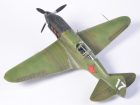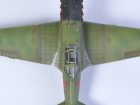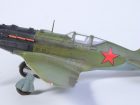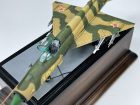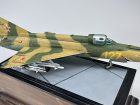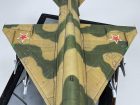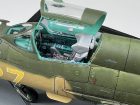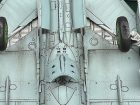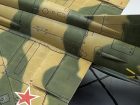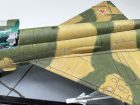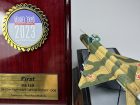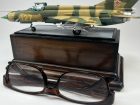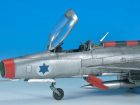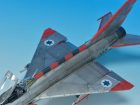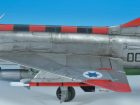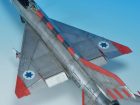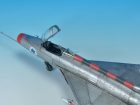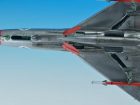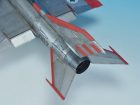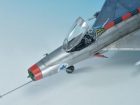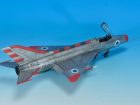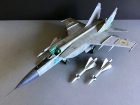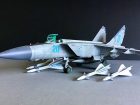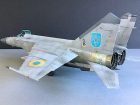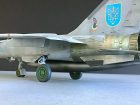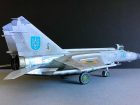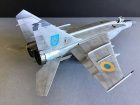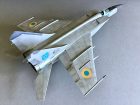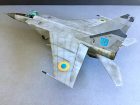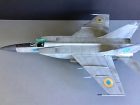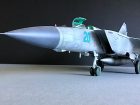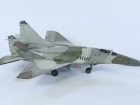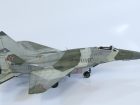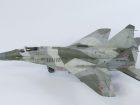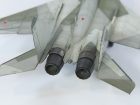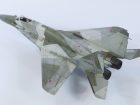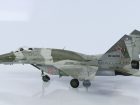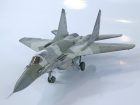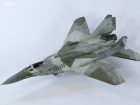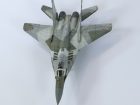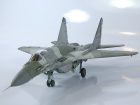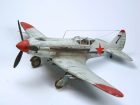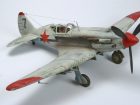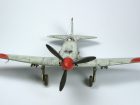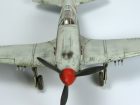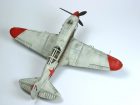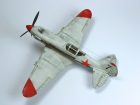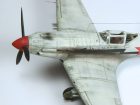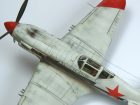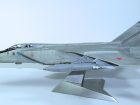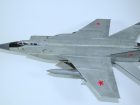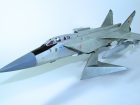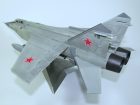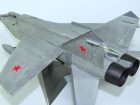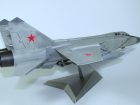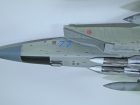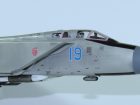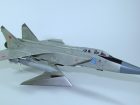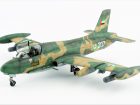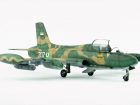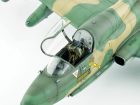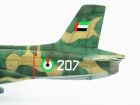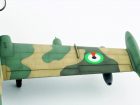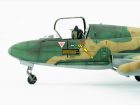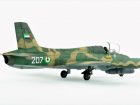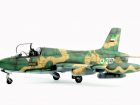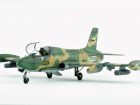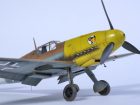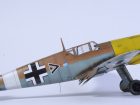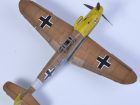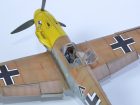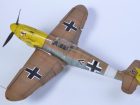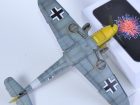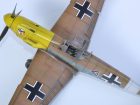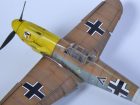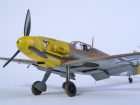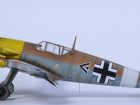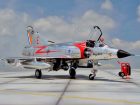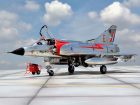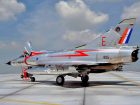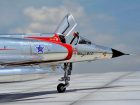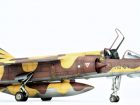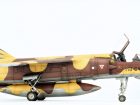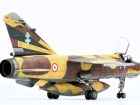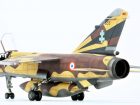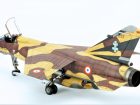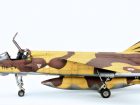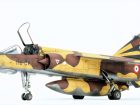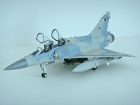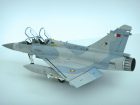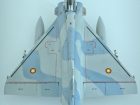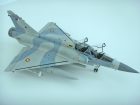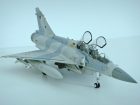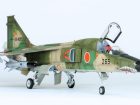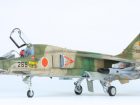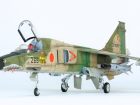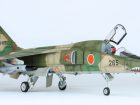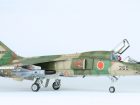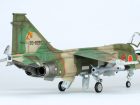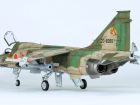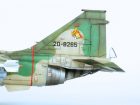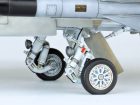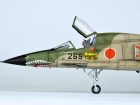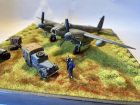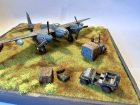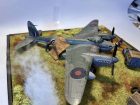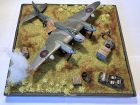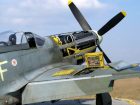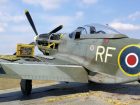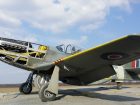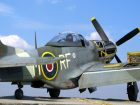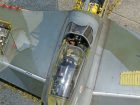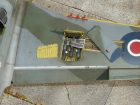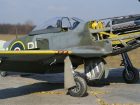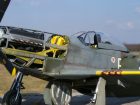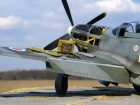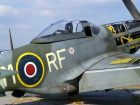Galleries: A | B | C-E | F | G | H | I-L | M | N-R | S | T-V | W-Z
More of our Subscribers’ amazing aircraft: M
The kit from Meng is very nice injected and a enjoyable build. I didn’t need any sanding work, the fit is awesome. I used Gunze Mr. Hobby Paints and salt technique for the chipping. The pre-shade made with yellow color and covered by IJN Green.
Some details of the aircraft:
Kit Review here: http://kitmaniac.com/site/?p=2162
Engine: Mitsubishi Ha-221 Ru | Power: 2,200hp
Crew: 1
Wing span: 37ft 11 5/16in | Length: 37ft 4 13/16in
Loaded Weight: 9,921lb | Max Speed: 454mph at 32,810ft
Best, Vini
A lot of models of Japanese aircraft are shown highly weathered and some almost devoid of paint. It seems that the assumption that the paint used was poor quality and thus had a short life is unfounded. The Japanese produced some very good paints – e.g. lacquers. in all probability it was a lack of primer, and the strong sun in Pacific theatre. The poor old Mavis was a bit lumbering and lightly armed – and thus rather vulnerable. There is a story of a Dogfight between a B17 and “Mavis”!!
Very nice kit – but possibly hard to find.
The kit goes together very well just like the others in this series. Hobby Boss has provided a metal floor to the gun bay which provides enough weight to keep the front wheel on the ground. The only issues that I had with the construction were with the tabs that located the cockpit inside the fuselage. I found that these had to be shortened slightly. Doing this made it much easier to get the fuselage halves together.
The only things that I added to the kit were some brake cables and the pitot on the left wing was replaced with telescoping rod and tube. On reflection the radar antennae look a little chunky and perhaps I should have replaced these as well to give this area of the model a more refined appearance.
I usually use oil paint as a wash to emphasise the panel lines on my aircraft models. In this case as an experiment I used dark grey pastel chalk. I think that the overall effect looks a little heavy in this case. I’ll certainly be experimenting with pastels in the future, but will maybe restrict their use to darker finishes.
Hobby Boss has covered a lot of the Me 262 variants with well produced, up to date kits that are accurate and easy to build. They are a great favourite of mine and I look forward to building some more of these in the future.
Dai W.
Hobby Boss has given modellers several excellent 1:48th scale kits of the Me262, covering most of the variants including one-off prototypes. I have built several of these in the past, but it occurred to me that I despite having built some of the more esoteric forms of the aircraft, I had never built the basic fighter version.
The kit is easy to build, and Hobby Boss supplies a metal part for the front wheel bay which provides (just) enough weight to keep the model sitting correctly on its tricycle undercarriage.
The kit also provides radio and oxygen bottle detail for the rear of the fuselage which will unfortunately add weight to the back of the model. Some of this internal detail will never be seen through the opening in the fuselage and can be left out, as despite the metal insert, the balancing act is really rather delicate! Some extra weight added in front of the gun bay and / or the nose cone would be helpful here.
The modeller will need to provide seat belts though these are easily sourced from after-market companies such as eduard.
I deviated from the kit’s colour plans preferring to use the (slightly different) late-war camouflage pattern shown in the excellent Valiant Wings publication on the aircraft.
The open crosses on the wings and fuselage were sprayed through commercial masks from Montex rather than use the kit’s transfers. This was to avoid the possibility of silvering of the extensive transfer film that inevitably exists on these images.
I also masked and spayed the dotted wing walkway markings so they may look a little over-scale. The kit provides transfers for these, but they are unfortunately printed on long thin strips of film which I find almost impossible to apply in a straight line. Again, I find it difficult to disguise the carrier film on these images. A slightly wonky, slivered wing walkway would definitely be noticeable. However, a slightly heavy looking, home-made, sprayed wing walkway might not be noticeable (unless of course I mention it in a popular online modelling magazine ….. which I just have).
Dai W.
Like Trumpeter with its series of 1:35 Russian KV tanks, Hobby Boss seem to be attempting to cover every possible variant of the Me262 including the one-off prototypes. The A-1b variant represented an attempt to power the Me262 with BMW300 engines as a fallback in case of shortages of the Junkers Jumo engines originally intended for the aircraft. As it turned out the machine was very successful and was in some respects superior to the Jumo powered variants. Despite this no production was undertaken.
The Hobby Boss kits are excellent, being accurate, relatively cheap and easy to build and like the Trumpeter KV series I often use these as simple relaxing builds in between more complex projects. There is a great deal of internal detail included such as the canon bay and equipment in the rear of the fuselage. I found the kits much easier to deal with than the earlier Trimaster / Dragon offerings, they even supply a metal roof to the front undercarriage bay to add enough weight to keep the front wheel on the ground. The only things that I found needed care were the doors over the cannon bay (I think it’s actually easier to leave them open than close them) and the underside / rear of the wing to fuselage joint (this seems to be a common problem with a lot of Me262 kits).
There were a wide range of colour schemes applied to the Me262 and this series of kits could be used as the basis for a very interesting collection.
Dai Williams
It is common knowledge that the Me 262’s are among Trumpeter’s best kits, so building one of these is not difficult.
But since Trumpeter also has the habit of providing you with lots of interior that will be invisible when the fuselage is closed, I decided to take the short cut and only to build what would be visible.
For the color scheme I picked one from a decals sheet of EagleCals (EC#96).
The building of the kit is posing no problems; the fit of most parts is really good.
3M Golden masking tape was used for the hard edge camouflage scheme; the paints are from the Tamiya and Gunze acrylic ranges.
The underside lighter blue color was sprayed first and on both sides of the fuselage quite high up. To bring extra life into the light blue, different colors are added to the base color and sprayed (very diluted) in many layers, the colors added can be very light grey, buff and flesh. To finish an extremely diluted mix of black and red brown is sprayed on some panel lines. Now the light blue area is masked (also on the sides).
On the topside we start with the green, but here we already mix with yellow, it does give a lighter and warmer shade, but you have to use enough yellow in the mix. Simple reason is that the pure green color will be used to go over the panel lines and randomly on the panels. Finish with a mist of the green to blend it somewhat together.
At this stage your paintwork can still (maybe I need to say have to) be a bit over the top, when you will have varnished the model a few times I a later stage these difference will be smoothed out.
After the green we continued with the brown, also the first layer was a mixed version of the later color, for the brown a mix with buff was applied first. Then the same sequence was followed to bring life into the brown parts. Once this was all done the masking tape was removed and on the sides the green and brown patches are sprayed.
For the red and blue band on the fuselage we first sprayed white a base color, then the yellow and to finish the red and blue. The model is vanished (Tamiya clear) for the decals, they performed very well. Decals are sealed with flat varnish from Vallejo.
Minor details (those items that always break if you put them on to early) are now glued on.
The almost last stage in the finishing is the use of oil paints around some panels to simulate paint chips; light grey can look good as aluminum without being too shiny. And to finish the model we use another layer of Vallejo flat varnish.
Jan G.
The kit goes together very well, although clean up of the seams in the engine intakes and on the nose takes time. The wheel well lacks any kind of detail, but I’ve had to glue this one down anyway as I started it when travelling and couldn’t add nose weight. All markings aside from the 3 fuel triangles are masked and painted.
Craig W.
Markings were masked. The kit goes together with no issues and is a pleasant build. It would benefit from internal fuselage and engine detailing given the large open space on the underside, but I didn’t do that this time.
The aircraft is built to represent the prototype. As we know it actually only got as far as a wind tunnel model so benefits from some Luft 46 artistic licence. I’m sure that there should have been more filler (and perhaps that it’s the wrong colour?), but I’ve just filled the major panel lines and left the rest. The scene with the dirt covered trackway takes inspiration from the last story in Pierre Clostermann’s ‘Flames in the sky’.
Craig W
My only real gripe is that some of the Balkankruezes were slightly out of register, which I might try to rectify with some masking and light spraying. It forms the centrepiece of a refuelling diorama, hence the opened fuel filler on the starboard wing. Some of the pics are on a temporary base!
Best wishes, Andy W.
My only additions were to ‘adapt’ an Eduard Bf110 G-2 PE set, a set of Owl resin Bf 110 late exhaust dampers and Fine Molds own Nano Aviation MG131 guns. The kit is very refined and still stands comparison with other 1:72 offerings of 2018. The only challenges are the multi-part canopy and drilling the right gun port holes in the nose.
Hope you like it!
Andrew Johnson
I started Kitty Hawk’s 1:35 AH-6M, so far the fitting is superb, what I didn’t like was the negative rivet on the fuselage, so I decided to add all the rivet in positive, it look much better with them, thanks to Archer for their excellent resin rivets.
Jorge O.
Thanks in advance for looking.
What can I say, this is my first Trumpeter kit and frankly I was impressed. Straightforward build other than a slightly complex nose to handle the side air intakes. I drilled out the various nose scoops and replaced the guns and pitot with hollow tube. Tyres were flatted and then Tamiya and Mr Hobby pointed in its general direction.
There is some shading going on and a bit of chipping where appropriate.
I know some Trumpeter kits get a bad press but I really enjoyed building this and she was a fun painting exercise.
Matthew G.
An old kit but still a great one to build. The only addition (apart from decals) was the Cutting Edge cockpit. I really enjoyed building this one as I had the chance to try different weathering techniques that I have wanted to try for a while. This includes hairspray (on the shock cone) and various oil shades (Burnt Umber & Paynes Grey, white and green) which sets off the model and gives it a more weathered look.
James V.
The model was built mainly OOB apart from an aftermarket Metal pitot; resin ejection seat and decals which were chosen as a mark of respect to the Ukrainian Air Force.
A pleasing and well-detailed kit to build. I used Mr.Hobby Aqueous acrylics, Revell enamels, Xtreme Metal enamels and Tamiya Weathering Pastels.
Thank you for viewing.
Paul. A
I didn’t do much with the cockpit: kit instrument and side panel decals – fine as the canopy is down. I did buy a few aftermarket bits: Eduard Brassin Exhausts; Master Pitot tube.
My only gripe with this kit is the definite joint seam where Trumpeter have used the standard MiG 29-A nose, up to just behind the canopy then joined the newly moulded rear fuselage to the front its a good place to do that but mine was slightly out of alignment and had a small step where the two came together. Apart from that its trouble free.
There aren’t many schemes for this one and the box art is pretty much it!!
I decided to go down a different route and try this black basing I have read about and gave the whole thing a coat of Mr Paint Matt black primer and very nice it is too! This stuff is great, literally just a few minutes after laying this paint down you can go on and begin spraying so as the norm I started with the underside colour and sprayed the marbling effect so far so good then the lighter top colour so far so good then the next intermediate colour again with good results then the last colour proved a little to dark either that or I over did it but the marbling effect wasn’t as pronounced – well lost actually but as it all looked good I was more than happy with the results.
Hope you like it?
Mark H.
After having built the old Revell kit some time in the 80´s I was really excited about the release from Kitty Hawk. BUT… Having heard about the problems with the kit I was a bit hesitant to start the build.
Nevertheless, Summer time is construction time, even if I needed a bit of freelance construction with this challenging kit.
I did not use any correction sets for the kit as there were none available at the time I started the build.
The front fuselage seems to be a bit too narrow, I did not correct that one.
The burner cans are a later, long version. I just cut them in half and somehow made the rest fit.(see pictures)
The Intakes are a mess, the only way is to have them shut, which is possible with the means in the kit. And do not follow the instruction for the respective etched part (see picture)
The rudders and strakes are a VERY bad fit on their inside with the aft fuselage. A seam of 2mm had to be filled with putty. (see pictures)
The surface lines and the other details on the model seem OK to me.
One other hurdle I encountered was the basic colour. After examining several pictures of real aircraft, I went for FS 16375 which is different from most of the recommendations.
The decals for my Algerian bird are from Begemot, who have produced another stunning set with this one for the MIG 25. With all the information provided for each bird covered and the painting instructions you can use these ones even for reference, which corrections and/or modification are necessary on the model.
Today perhaps I would go for the new ICM kit …
Hope you like it!
Jürgen Jaacks
Quite an old kit with a lot of poor fit around wing root front and a lot of sink marks. This was a test piece and so not corrected.
‘Marmite’ weathering technique etc to wing edges. Had to check out the construction of the plane as it was part wood. Made sure I exposed the metal or original green colour. No varnish used between layers… I forgot but it caused no problems.
Used a worn out Flory sponge stick to wear back the white [ grey ] to the green colour.
Canopy dipped in Future.
Uschi elastic for Ariel.
Pastel and airbrush weathering.
Cheers, David G.L
Built ‘in flight’ as a desk display, this is a big imposing kit.
The cockpit has eduard pre-painted photoetch instrument panels and pilots were sourced from the spares bin. There are plenty of weapons to choose from in the kit, but the R33’s are particularly nice on the recessed fuselage stations.
Mick S.
It’s Italeri’s 1:48th scale MB326k Impala kit in UAE trim. This camo was a real challenge to say the least. I added a Neomega resin cockpit to it and a Wolfpack resin bang seat. The rivets were made by hand with Rosie the Riveter and paints used were Gunze. I used Alclad Aqua gloss and Klear cote matte for coatings.
Hope you like it!
Gunze and Tamiya exterior with Vallejo interior details. There is a fair bit of tonal variation on the wings and fuselage as I lightened/darkened various panels to break up the monotone RLM79 finish. There is some restrained chipping with a silver pencil.
Tyres flatted and pitot replaced with hollow tube. Everything hanging down. The spinner is held on with magnets. I found it centres more precisely that way and can be easily removed for transport to shows. Amazingly it even spins.
A joy to build notwithstanding the cockpit is pretty busy and a bit of a tight fit here and there, especially the instrument panel.
Keep ‘em coming Eduard.
Rick G.
The idea for this bird came with the decals from Matterhorn Circle in Switzerland.
Decal sheet 48-003 covers the sole Mirage III C by Switzerland in its last painting scheme after reactivation from temporary storage in 1973.
The painting was kind of work-intensive, as the neon colours RAL 2005 and RAL 1026 needed a white base and masking for each colour, meaning masking most of the bird twice.
The kit has some fit issues here and there, but some putty healed them all.
The decals are ALPS-printed, meaning they had to be cut out each. They are of good quality and colour density. The instructions are comprehensive and detailed with good background information and some pictures.
I hope you like it…
Jürgen J.
I also added a cockpit resin set. Otherwise the kit was built out of box.
The decals were kind of a challenge as the originally intended CONDOR decals are not available any more in 48th scale.
I printed them from pictures from the internet and also used some decals from the FCM Malvinas set.
The kit, being one of the first attempts from HobbyBoss was easy to build and in the end worked even better than the Eduard kit I did build in parallel.
The result is a Mirage III CJ at the end of its long service life in two very different air forces.
Jürgen J.
It’s Italeri’s latest 1:48 boxing of this aircraft. The original kit dates from 1978 which was issued by ESCI back then. I riveted the kit to bring it up to more modern standards and masked all the stripes in the tail and fins. Cockpit details were non-existent in the kit, so I fitted a resin cockpit and bang seat.
Jeroen B.
I’d like to show you my Kinetic Mirage 2000B I recently finished. It was mostly built straight from the box. The only additions were resin seats, exhaust and a metal pitot tube.
The model was painted with Gunze Aqueous colors.
The kit went together pretty well and the decals are surprisingly good. I really enjoyed this build and will probably build the single seater as well.
René VDH.
Hasegawa’s 1:48 Mitsubishi F-1 in the JASDF forest camouflage. It’s an old but decent kit. I have used Gunze paints which are spot on and a Platz decal set. The anti-submarine missiles are from the Hasegawa JASDF weapons set.
Hope you like it>
Jeroen B.
Finished with Humbrol enamels and mainly brushed paint, built straight out of the box except some belts for the cockpit created using the method Geoff explained on here using painted masking tape.
I finished it off with a little diorama using an Oxford die-cast US Jeep and a resin Austin Tilley, with some of the older Airfix RAF ground crew.
Mark S.
I have finally seen it – the best aircraft scale model I have ever seen in all the years I have been modelling. This one popped up on Facebook and I was simply blown away – I mean, just look at the realism on offer here:
- restrained weathering overall
- paint finish just faded enough to be completely convincing
- panel line enhancing that is so often seen on WW2 fighters like the Mustang
- accuracy in the build with no meaningful defects visible to my eye
- decals or markings flawless – they may be painted on, who knows but they look painted and weathered to match the surrounding paintwork with care taken to run the panel line weathering through the markings
- blemish-free canopy with perfect frame painting.
I could go on but I won’t – just enjoy Artur’s end result, utterly inspirational to me and I’m sure many of you too.
Here are some notes from Artur…
- Tamiya 1:32 kit
- Serial: KH663 No 303 Sqn RAF
- Barracuda Studios cockpit upgrade and stencils
- Melius Manu masks
- KoTeBi World Models – the kit
- Szeroka5 – paint
- HGW belts
- Eduard photo etch parts, wheels resin
- Master gun barrels
Thanks Artur for agreeing to share your beautiful work.
Geoff C.
